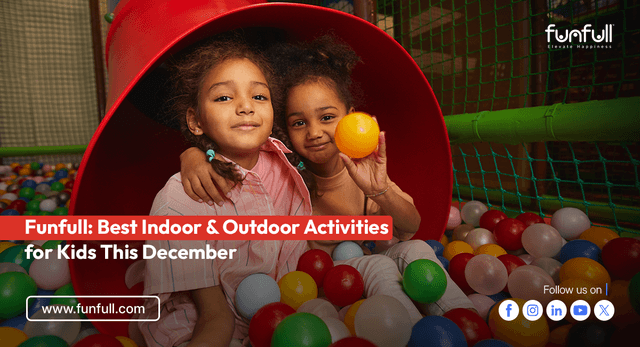How a Bowling Alley Near Me in Delaware Became Our Social Skills Classroom

Bowling Alley Near Me in Delaware : Our Social Skills Classroom
Social skills are one of the few things parents are expected to teach... without being given the real environments to do it in.
You can remind them 17 times to “be nice,” “take turns,” or “say sorry,”
but if their world is made up of solo screen time, structured lessons, and occasional chaos at school—they’re not getting the practice they need.
Because the truth is:
Social skills don’t come from reminders. They come from real, unscripted reps in the wild.
What Real Social Development Actually Looks Like
It doesn’t look like perfection.
It looks like:
- Interrupting, realizing it, and adjusting
- Jumping the line, getting called out, and backing off without melting down
- Negotiating a game rule that no one can agree on
- Letting someone else go first, even if it wasn’t your idea
- Noticing when someone’s feeling off - and doing something kind, just because
These aren’t “talk it out” moments.
They’re embodied learning - social instincts getting refined through trial, error, and recovery.
Kids need space to get those reps over and over without being shamed for messing it up the first few times.
Where It Actually Happens: In the Wild, Not the Living Room
The best social development doesn’t happen in classrooms or circle time.
It happens:
- On the playground
- During chaotic group games
- In a messy backyard, nerf battles
- In sports… but also in casual games like tag, hide-and-seek, and yes - even bowling
Because bowling?
It’s sneaky like that.
It teaches:
- Waiting your turn
- Cheering someone else’s success
- Handling failure in front of others
- Letting little siblings participate and not rage-quit
- Knowing how to talk trash… respectfully
It’s one of the few low-pressure group activities where everyone has space to show up—even if they show up differently.
Why Talking Less (and Observing More) Actually Helps
As parents, we sometimes narrate too much:
“Say this.”
“Do that.”
“Now go ask them if they’re okay.”
But kids learn better through energy than instructions.
When they’re in the middle of real play—with all its mess, momentum, and magic—they’re actually reading dozens of nonverbal cues every minute:
- Who’s annoyed?
- Who’s left out?
- What’s the tone here - goofy or competitive?
- Did I just go too far?
- Is someone pulling back, and why?
That is emotional intelligence in motion.
And it doesn’t require coaching.
It just requires presence, practice, and space.
Our Favorite Weekly Move: Casual, No-Pressure, All-People Fun
Once a week, we do “whole crew time.”
The rule is everyone comes, and no one has to be the star.
It’s not about being social. It’s about being around people and learning to exist well with them.
That’s when we started rotating spots that:
- Have space
- Don’t overstimulate
- Let people try, fail, recover, and laugh
One of the easiest wins?
A local bowling alley near me in Delaware.
Not because it’s perfect—but because it’s predictable, quiet-ish, and makes room for real interactions without social pressure.
No forced conversations.
Just shared rhythm, friendly competition, and natural connection.
Even kids who barely talk end up high-fiving someone by game two.
Why This Works for Every Kid (Even the Quieter Ones)
Not every kid is the loud one in the group.
Some:
- Watch before jumping in
- Feel unsure about how to ask to play
- Need extra seconds to process
- Avoid eye contact but still crave friendship
And that’s exactly why this kind of slow-paced, relational play works.
Because social development doesn’t just happen through talking.
It happens through existing with others long enough to understand the flow.
And the flow needs to feel safe.
Places like a chill bowling alley, an after-school hangout, or an open-ended play park create safe friction - just enough challenge to grow, but not enough to overwhelm.
Final Thought: Social Skills Can’t Be Coached. They Have to Be Lived.
Your kid isn’t behind.
They just haven’t had enough practice that counts.
The good news?
You don’t need a curriculum, a coach, or a crash course to help them grow.
You just need to:
- Put them around other humans
- Let them mess up
- Give them time to figure it out
- Celebrate when they adjust
And you don’t have to force it.
Sometimes that growth starts in a backyard.
Sometimes it starts during a quiet group hike.
And sometimes? It starts at a bowling alley in Delaware, where the lights are low, the snacks are simple, and every turn is a chance to practice life in motion.
No pressure. No rush. Just people, patience, and progress—one frame at a time.
Also read: How to Plan a Perfect Family Day Out with Funfull
Also read: Unplugged & Unstoppable: 3 Hands-On Family Adventures for a Fun Day in Delaware
FAQ
1. My kid talks a lot but struggles to connect. What do I do?
Let them play where connection isn’t all verbal—like bowling or team games. It builds timing, rhythm, and awareness without over-talking.
2. They freeze in social settings. Help?
Skip the pressure. Bring them to low-stakes places where they can just be around others. A bowling alley during quiet hours works great.
3. They can’t handle losing. Any fix?
Let them lose often—but gently.
Games like bowling teach how to bounce back fast, without lectures.
4. My kids fight constantly. Can anything help?
Yes—shared rhythm.
Bowling builds turn-taking, cheering, and waiting. It teaches teamwork without needing deep conversation.
5. Do I need to coach them through every social moment?
Not at all.
Just set the scene. Watch quietly.
They’ll learn more from real feedback than reminders.





